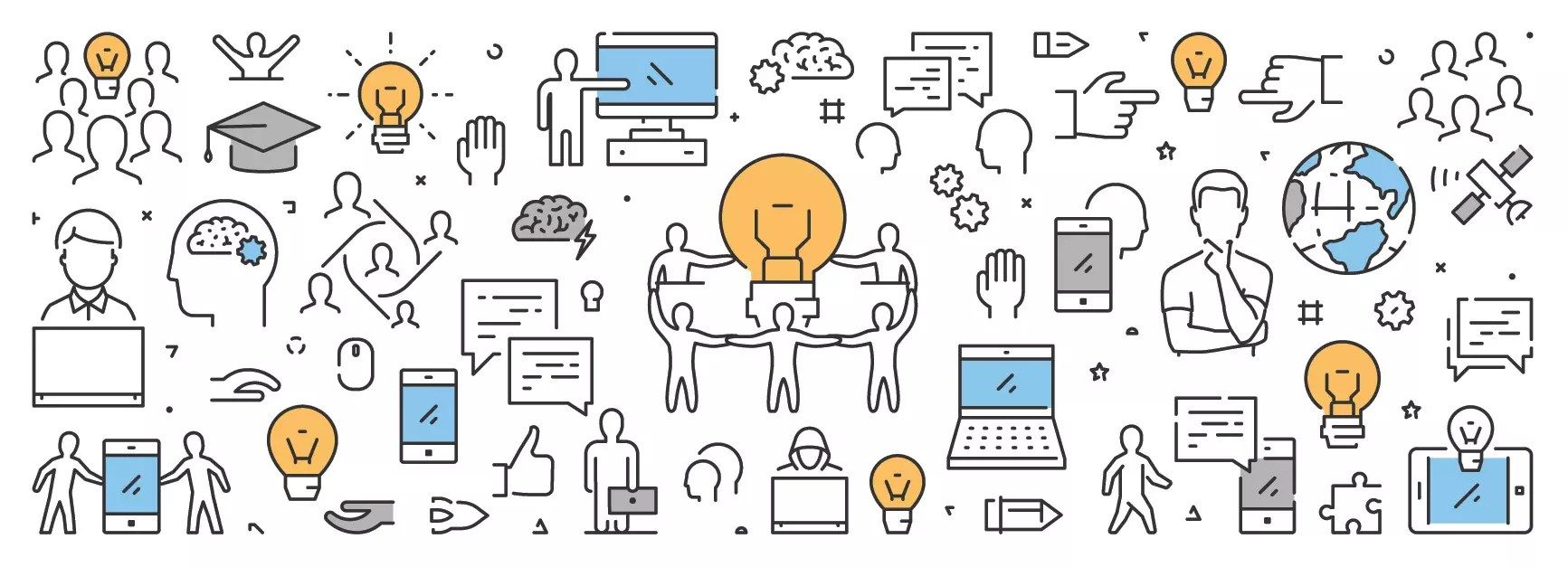How Big Data Enables Developing An Open Strategy

Open strategy is the decentralisation of strategy formulation across, previously excluded, internal and external stakeholders. Traditionally, companies focused on control and ownership of an organisation’s assets to ensure competitive advantage. However, this focus on control of resources is no longer the key to success. In today’s data-driven societies, knowledge, i.e. data, is widespread and easily accessible and organisations are increasingly turning into data companies. Access to this knowledge can fuel innovation, especially when it is used to embrace external ideas and data and when these insights are combined with internal R&D. This enables organisations to find new opportunities, develop a new business model and remain competitive in this digital age.
The process of open strategizing is possible thanks to the plummeting costs of communication and the availability of new technologies such as big data, blockchain and artificial intelligence. These technologies allow organisations to understand better and apply the intelligence of the crowd, resulting in better solutions, improved innovations and more-informed decision-making. Open strategizing is increasingly being adopted by organisations.
IBM’s Innovation Jam
Open strategy has been around for almost 20 years since it was first used by IBM in their Innovation Jam. It can be seen as an extension of open innovation, which enables organisations to discover, explore and exploit new opportunities by combining internal and external resources, which often result in new services and products. Open strategy, however, goes one step further by allowing previously excluded stakeholders, such as customers, suppliers, connected devices or even competitors, to join in the strategy-making process to create increased value for the organisation. Open strategy allows organisations to better understand the fast-changing environment by offering new, internal and external, data sources, which, when analysed correctly using big data analytics, can result in new strategic opportunities.
IBM uses the annual innovation jam, a concept developed in 2001 to unite the organisation, to understand what ideas reside in the organisation. Everyone in the organisation can contribute and through game theory, the ten best ideas are selected, which will receive funding to be developed further. After some time, those ten ideas are evaluated and some will be developed further, while others will be stopped. The IBM Jamming Sessions show that many people within an organisation have important strategic ideas, which in a closed-strategy process are not being used as strategy-making is done near the top of the organisation. The Jam Sessions, however, bring many ideas together, which result in many new big product lines or smaller ideas that contributed to the bigger ideas. The IBM Jam Sessions also show that people want to be engaged and that they want to share their ideas with a wider audience, even if those ideas do not generate as much attention.
2 Components of Open Strategy
Open strategizing consists of two essential components: inclusiveness and transparency. Inclusiveness is related to including previously excluded stakeholders when developing a new strategy, while transparency deals with being transparent when communicating with those stakeholders. Both inclusiveness and transparency have become possible thanks to the vast amounts of data that is now being generated by people, devices and organisations as well as the big data analytics tools that allow organisations to analyse all those data sources rapidly. After all, when organisations such as IBM during the Innovation Jam involve customers, suppliers, connected devices, employees and even competitors in their strategy-making process, it results in vast amounts of data that has to be analysed. Big Data enables inclusiveness, as it helps to collect and store the data generated by those stakeholders, while analytics offers the required insights from that data by using, for example, Natural Language Processing and text analytics to detect actionable ideas among the data. These insights can then be shared among those involved, resulting in the required transparency to ensure that all involved stakeholders remain aligned. Open strategizing empowers employees and customers and this would not be possible without big data and analytics.
Big Data and Open Strategy
For many organisations, the most likely path to creating competitive advantage is by using big data and subjecting it to (advanced) analytics. When organisations apply big data analytics to their strategy-making process to involve previously excluded stakeholders, it can result in additional competitive advantage due to insights that otherwise would remain unknown for the organisation. Better-informed decisions that are data-driven result in data-driven organisations and such organisations, generally, develop better, more informed, strategies. In this digital age, such a well-informed strategy increasingly becomes important. Hence, in case your organisation has not yet adopted an open strategy approach, now would be the right time to get started with it.
Image: karpenko_ilia/Shutterstock





